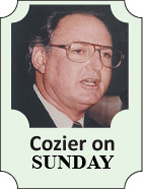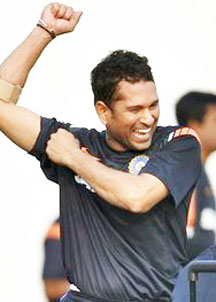All’s well that ends well, even if conditionally in the case of the West Indies series in Bangladesh.
After the stutters of the 61all out in the third ODI and the struggle to hang on for a draw in the first Test in Chittagong, the emphatic victory by 229 runs in the final match in Dhaka was a revelation of character and resolve from a largely inexperienced team that might have been spooked by its preceding troubles in alien conditions.
 As satisfying as it was, it should be put into perspective. It was a bottom of the table clash between No 7 in the International Cricket Council (ICC) Test rankings (West Indies) and No 9 (Bangladesh).
As satisfying as it was, it should be put into perspective. It was a bottom of the table clash between No 7 in the International Cricket Council (ICC) Test rankings (West Indies) and No 9 (Bangladesh).
A considerably more difficult, if not impossible, challenge faces the West Indies in the coming month across the border in India, the team ranked No1 as recently as August and still No 3 after their summer’s 4-0 whitewash in England.
They brought a weakened team to the Caribbean for the Test and ODI series in June and July and still won both. Now three of their major batsmen absent then – Sachin Tendulkar, Virender Sewag and Gautam Gambhir – are back to join Rahul Dravid and VVS Laxman at the top of the order.
These are the Messis, Ronaldos, Rooneys and van Persies of international cricket at present, Tendulkar probably even more celebrated in his sport than any contemporary footballer.
For him, there is the incentive of recording his 100th international hundred (Tests and ODIs), a figure that has eluded him since the World Cup in March.
For the team, the added motivation is to erase the memories of the debacle in England, having already started with their 5-0 sweep of the home ODIs over their summer’s conquerors last month.
The West Indies batting, without two of its three most outstanding players, Chris Gayle (through his continuing standoff with the board) and Ramnaresh Sarwan (injured), bears no comparison. Only the everlasting Shivnarine Chanderpaul measures up. Otherwise, the statistics indicate a complete mismatch (SEE box).

No wonder coach Ottis Gibson states that, “against this Indian line-up, you probably need to play seven bowlers.” Even if the West Indies could fit them all in, which they can’t, they are almost as inexperienced as the batsmen. Fidel Edwards (149) and Darren Sammy (50) are the only ones with 50 or more Test wickets.
Significantly, India’s bowling is similarly untried. As their selectors try new men, off-spinner Harbhajan Singh, for more than a decade a constant in the eleven, has been dropped. There are two new fast bowlers, Varun Aaron and Umesh Yadav, on debut and Ravichandra Ashwin has finally taken Harbhajan’s place for his first Test.
It means the tall fast bowler Ishant Shama (Man of the Series in the Caribbean earlier this year) is the only one in the squad with more than 50 wickets (149). Unless they are overwhelmed by the sheer weight of runs amassed by India, it is a chance for the West Indies to build the kind of total they raised in the second innings in Dhaka.
As in any sporting contest, No 3 holds a huge advantage over No 8, especially at home. In this instance, No 8 opens the Test series in Delhi today (overnight Caribbean time) heartened by the extent of their victory over Bangladesh just a few days earlier.
They would have been inspired by the input of those most prominent in constructing it.
Nerves were immediately settled by the 100-run start by Kraigg Brathwaite, aged 18 in his third Test, and Kieran Powell, aged 21 in his second, as far as I can ascertain the youngest opening partnership the West Indies have ever had.

Brathwaite was coming off a second ball duck in the first Test. Powell was in his first Test away from the Caribbean. Theirs was a significant example to the others.
Kirk Edwards was in third Test, his credentials already established with his hundred on debut against India in Dominica in July.
He is no dasher but, like others of the past such as Charlie Davis and Larry Gomes, he has the concentration and determination needed for big innings, knows his limitations and keeps within them.
His 121 and 86 in Dhaka were innings Davis might have played at his best in the 1970s. He will, inevitably, pass through rough times but he appears to have the disposition to deal with them.
Of all the new, young batsmen, Dwayne Bravo is the most special. His precocious talent was obvious in his maiden Test series against Sri Lanka a year earlier so that his subsequent loss of consistency and confidence was an increasing worry.
As they so often do, they suddenly returned in the second innings in Dhaka. He not only passed his first hundred in his 10th Test but carried on to 195.
Even then, he was distraught to miss a double in the push for quick runs. Now he should be satisfied with nothing less.
Set up for a handy first innings total by Brathwaite, Powell, Kirk Edwards and Chanderpaul, Fidel Edwards left Bangladesh in first innings ruins by dispatching the first five batsmen for 59.
His has been a remarkable, determined comeback from the fast bowler’s bane of surgery on a slipped disc; out of action for a year and a half, he has returned for five Tests to add 19 wickets to his collection.
Bravo’s partnerships of 151 with Edwards and 143 with Chanderpaul initiated the second innings declaration that set Bangladesh their improbable goal of 508.
It appeared an ultra-cautious approach but was based on Bangladesh’s spirited attempt to reach the 520 set by Sri Lanka on the same ground three years earlier. They got to 413 against an attack including Chamina Vaas and Muttiah Muralitheran.
They were on course for a repeat at 256 for four when Davendra Bishoo, the little leg-spinner with the big heart in his sixth Test, intervened with his first five wickets return to secure the strong result. He is the first bowler of his type to hold down a place since Dinanath Ramnarine 10 years ago. His start suggests a long career.
Not all the pieces fell into place in Bangladesh. India will provide a severe examination of the team itself and place the spotlight on some individuals.
The batting of Captain Sammy and wicket-keeper Carlton Baugh needs to improve to bolster a shaky lower order.
There were signs in the second innings of the Dhaka Test that Kemar Roach was finally returning to form. India might tell if it is authentic.
Adrian Barath returns after his latest injury for another chance to build on the promising beginnings of a century on debut in Australia two years ago.
Above all, the West Indies need to be competitive and they can only achieve that if everyone is fit and gives his best.
Tale of the batting tape
Top five in order
India
Name Tests runs average 100s
Sehwag 89 7735 52.26 22
Gambhir 41 3336 48.34 9
Dravid 157 12775 53.00 35
Tendulkar 181 14965 56.27 51
Laxman 127 8339 46.26 16
West Indies
Name Tests runs average 100s
Barath 7 350 26.92 1
Brathwaite 3 98 16.33
Powell 2 101 22.75
K Edwards 3 368 73.60 2
Bravo 10 751 46.93 1
Chanderpaul 135 9493 49.18 23









